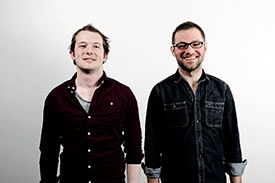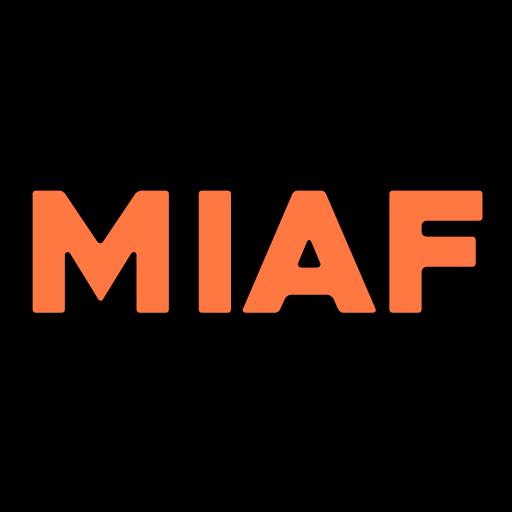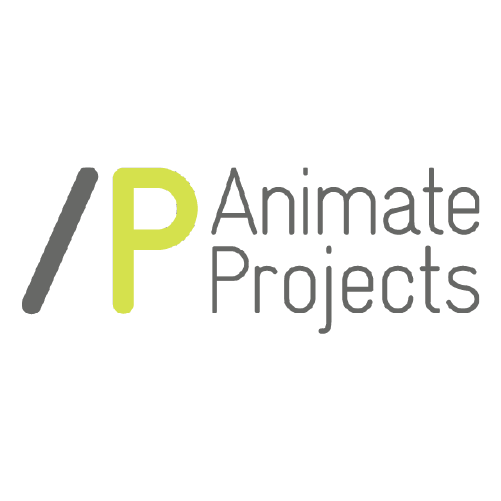 Insane pigeons, a misguided monkey, the existential crisis of an animated GIF, stifled musicians, the poetry of Robert Burns and fracking are just some of the characters and subjects tackled in the animated worlds of Scotland’s most dynamic double-act: Will Anderson and Ainslie Henderson.
Insane pigeons, a misguided monkey, the existential crisis of an animated GIF, stifled musicians, the poetry of Robert Burns and fracking are just some of the characters and subjects tackled in the animated worlds of Scotland’s most dynamic double-act: Will Anderson and Ainslie Henderson.

Graduates from Edinburgh College of Art’s Animation Degree in 2011 and 2012, Will and Ainslie’s worldwide reputation has a bulging awards cabinet as testament to their talent, including two BAFTAs, two McLaren Awards a British Academy Award, a nomination for the Cartoon D’Or and almost 50 awards at festivals around the world. They work together as freelance writers, directors and animators on film, television, music video, web & interactive projects.
Always on the lookout to diversify their work, for the last 3 years they have been working on a feature produced by the Scottish Documentary Institute called Dom about a small animated cat that manifests out of a cancer scare – a grassroots story about cancer, how it shakes a family, how you can internalise your feelings, and how art is used as a form of escapism.
We’re proud to present a career-spanning retrospective of their inventive, emotional, hilarious and fundamentally entertaining collective of work. And for this very special LIAF 2018 event, Will and Ainslie join us onstage to discuss the many facets of their award-winning careers in animation and screen many of their most celebrated films including a sneak peak of their forthcoming feature ‘Dom’.
LIAF’s Festival Director Nag Vladermersky caught up with Will and Ainslie for a wee chat prior to their LIAF appearance.
Will & Ainslie Interview with Nag Vladermersky
Nag: Where did your interest in animation come from? Have you always had an interest in animation prior to joining the course at the Edinburgh College of Art?
Will: I’ve been into animation since I was a young boy. The big obvious shows like The Simpsons and South Park were, and still are, influential to me. Although I think the thing that excited me more than anything were the stories. Those shows seemed less about the animation, and more about the ideas that were thrown at them. That’s a thing that I feel with my work. I think I certainly let things slide a bit. Although, the more I make things move the better I’m getting. It’s a strange one.
Ainslie: I came to it late, in an odd way, almost by accident. I was a musician until I was 30, and I took night classes in pottery to learn to make promotional mugs for an album I’d recorded. I fell in love with clay first, then making models, sculptures, and then characters. In the back of my head was always this nesting plan to one day go to art school and study stop-motion, probably from watching Aardman stuff, and Trap Door as a kid. One day I watched a friend’s short stop-motion graduation film (Joseph Feltus’s Solo Duets) and I couldn’t resist it any longer.
Nag: Humour obviously plays a massive part in your films. Do you have specific comedic influences you take your ideas from?
Will: Ainslie.
Ainslie: That’s obviously a joke, but its kind of true the other way round too. I don’t tend to make funny stuff without Will.
Nag: Any other influences?
Ainslie: Although I also liked South Park and The Simpsons growing up, I think as influences, maybe we should give a nod to the likes of Ricky Gervais and the Mighty Boosh. I think there’s often an edge of something slightly tragic, sad or pathetic in our characters that is part of a British tradition much older than them, but I’d guess we both watched those shows and absorbed a bit of tone from them. Strangely, we’ve never even talked about this, so it’s definitely not a conscious decision.
Nag: How do the two of you work as a team? I’m thinking specifically of your short films where the dialogue seems almost improvised. Is that the case? Do you bounce ideas off each other and record loads of dialogue until you find the right nuggets to work on as a voice track, then animate along to the words?
Will: I would say that’s a pretty good guess. We certainly try to keep as much of the work we collaborate on as lively and conversational as possible. As a lot of our digital shorts are comedy led, I guess it makes a lot of sense to have very natural, lively, believable dialogue to grab people. Personally I think the more we allow ourselves to improvise the more exciting everything is. I’m a strong believer in the characters telling the animator what to do, so loosening up the dialogue goes some way to enabling that.
Ainslie: Yes, ideas are often gestating between us as kind of silly ‘in jokes’ that we make each other laugh with for a while, then they eventually find a way to become a sketch. We’ll start with that and riff on it until we find a dynamic, or a moment that makes one, or both of us laugh, then work back from there.
Nag: Will, I’ve heard that the Edinburgh College of Art tutors tried to discourage you from making a long student film (‘The Making of Longbird’) because they thought it would inhibit the chances of getting screened at festivals. In fact it was a great success, winning multiple awards. Did you have a big battle to make it the way you wanted to? And can you talk a bit about the process of making it?
Will: I wouldn’t say they discouraged it, actually (might have to retract that statement if I said that somewhere else!). They were very supportive. What is true is I didn’t genuinely think it would travel well due to its length, therefore not screen particularly well at festivals.
The Making Of Longbird was made with the same approach I still use, which is one that builds in room for improvisation within the narrative, as well as in its production. I’m a big fan of problem solving, therefore not knowing exactly where the story is going keeps me guessing right the way through. This ideology has continued through to newer shorts of mine, like Have Heart, which was made chronologically without a storyboard or animatic.
In summary I’d say that a huge part of the work I make is led by discovery, no matter how big or small… maybe it’s a quirk an animated character develops out of being allowed to play around, or maybe it’s an edit that comes in at the end that changes everything.
Ainslie: But what you’re implying is absolutely right Nag, despite all the awards, the film is terribly self indulgent, and clearly far, far too long.
Nag: Ainslie, with ‘Stems’ and Will (to a lesser extent with ‘The Making of Longbird’) you like to show the process of making animation in your films, by making the puppets and figures come alive and the animator (yourselves) having a conversation with your characters. It’s almost like your characters have a mind of their own. What’s the rationale behind this? Are you just having fun with your audience?
Will: I think all good films have characters with minds of their own. Why should animated characters be any different?
Ainslie: Maybe housing the characters in the real world as ‘animated characters’ almost makes them feel more ‘real’, or by exposing the artifice of it, we can enjoy the illusion of their aliveness even more. Plus, I get to avoid making backgrounds. A distaste for making backgrounds is something else I know Will and I share.
Nag: What interests you about the documentary form? And why do you think animation is a good medium to use with documentary?
Will: The things about documentary are the same things that I’ve mentioned about improvisation and discovery. To add to that, generally speaking, I find documentary films to be much more meaningful and important to me… like they are directly searching for some kind of truth in the world. I’d like my films to do that, and as interests cover both fictitious and non-fictitious worlds, it makes sense to merge them together to discover something else.
Nag: Your forthcoming feature film ‘A Cat Called Dom’ sounds like a difficult subject to tackle, but also a personal autobiographical one. Can you tell us more about it?

Will: Our first feature is a film that blends documentary footage with a fictitious character, a curious little cat called Dom. He is a small animated cat that manifests out of a cancer scare. It’s a grassroots story talking about cancer, how it shakes a family, how you can internalise your feelings, and how art can be used as a form of escapism.
Will Anderson & Ainslie Henderson: The Playful Worlds of Scotland’s Most Dynamic Animated Duo screens at Barbican Fri 30 Nov book tickets
















